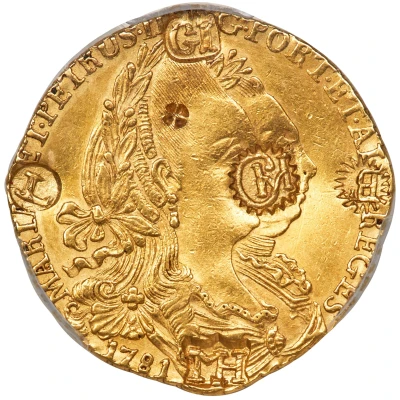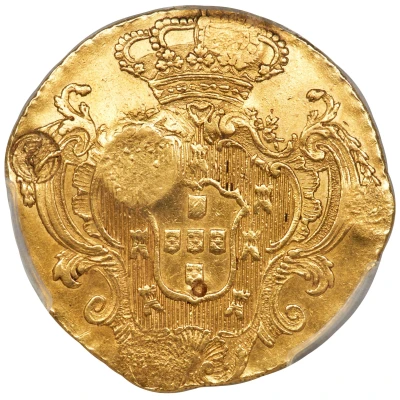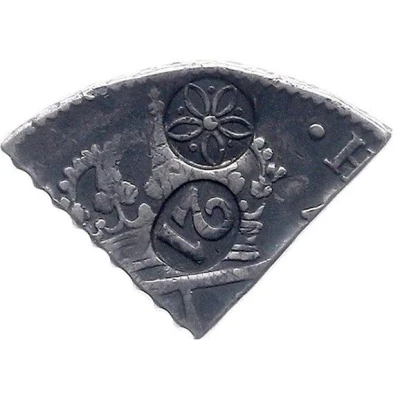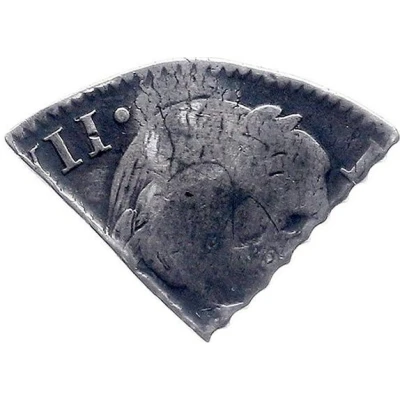


© Heritage Auctions
Johannis Countermark C1 and C2; without mint mark ND
| Gold (.917) | 14.3 g | 21 mm |
| Issuer | Curaçao (Netherlands Antilles) |
|---|---|
| Type | Standard circulation coin |
| Years | 1793-1799 |
| Value | 1 Johannis |
| Currency | Colonial Real (1799-1828) |
| Composition | Gold (.917) |
| Weight | 14.3 g |
| Diameter | 21 mm |
| Shape | Round |
| Technique | Hammered, Countermarked |
| Demonetized | Yes |
| Updated | 2024-10-06 |
| Numista | N#176042 |
|---|---|
| Rarity index | 95% |
Reverse
Coat of arms of Portugal countermarked with 'W'
Script: Latin
Lettering: W
Comment
The 'Johannis' was the name used for the Portuguese half Dobra or Peça, bearing the portrait of King John V (Port: João V; Dutch: Johan). Later coins with different rulers were called the same nonetheless.Since Curaçao did not emit its own currency yet, a lot of foreign currency was used on the island. Amongst those foreign currencies was also the half Dobra.
In 1793 lighter coins were produced in England and North America with lesser gold contents. In 1798 Governor Lauffer ordered to have the real Johannis coins of 1776 (Brazil KM#172.2) and 1781 (Portugal KM#271) countermarked with 5 marks and accompanied by a bank note prooving its genuineness.
Mark C1: Letters 'GH' in radiant circle; raises the value from 6 to 8 patinhos
Mark C2: Letters 'GI', 'L', 'MH' and 'B' on 1 side, the letter 'W' on the other side, all close to the edge (to prevent clipping); these marks were combined with a note of validity.
The 'GH' counter mark is thought to be the initials of local gold smith Godhelp Israel Hoyer. The letter 'W' might refer to Willemstad, the capital of Curaçao.
Interesting fact
One interesting fact about this coin is that it was minted during a time of great change and upheaval in the Netherlands Antilles. The coin was minted in 1793, just a few years after the French Revolution, which had a significant impact on the Dutch colonies in the Caribbean. The coin's mintage was also a response to the economic needs of the time, as the Dutch government sought to address the shortage of small denomination coins in circulation. Despite the challenges of the time, the coin remains a valuable and sought-after collector's item today.

